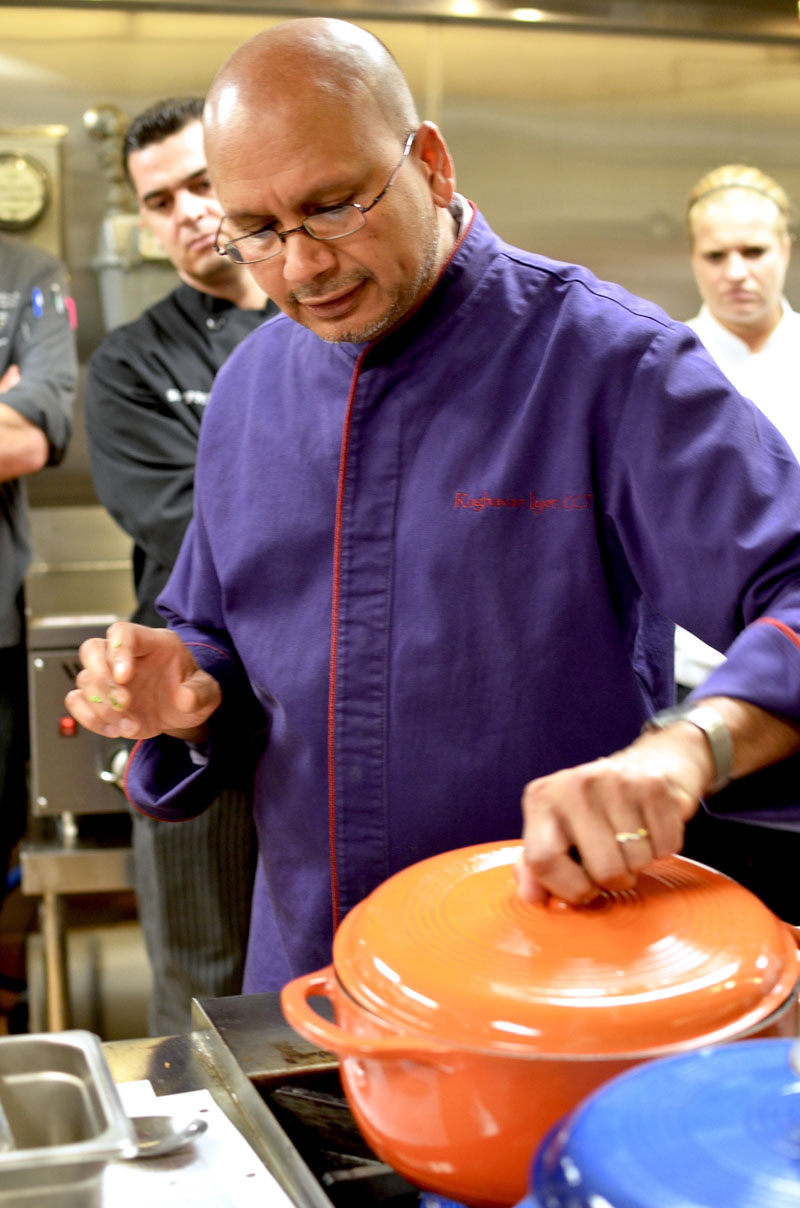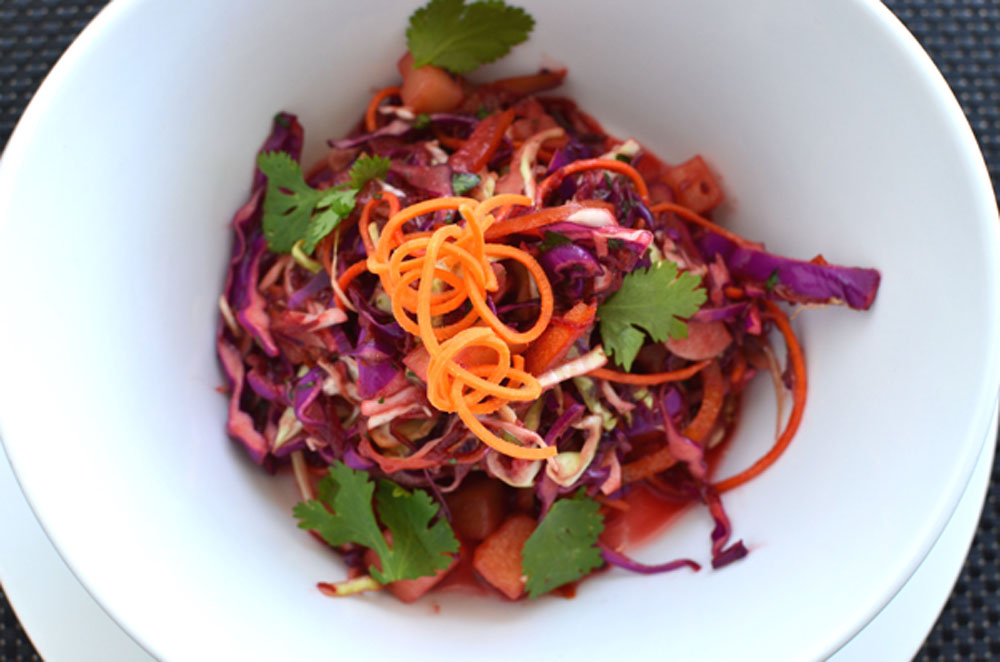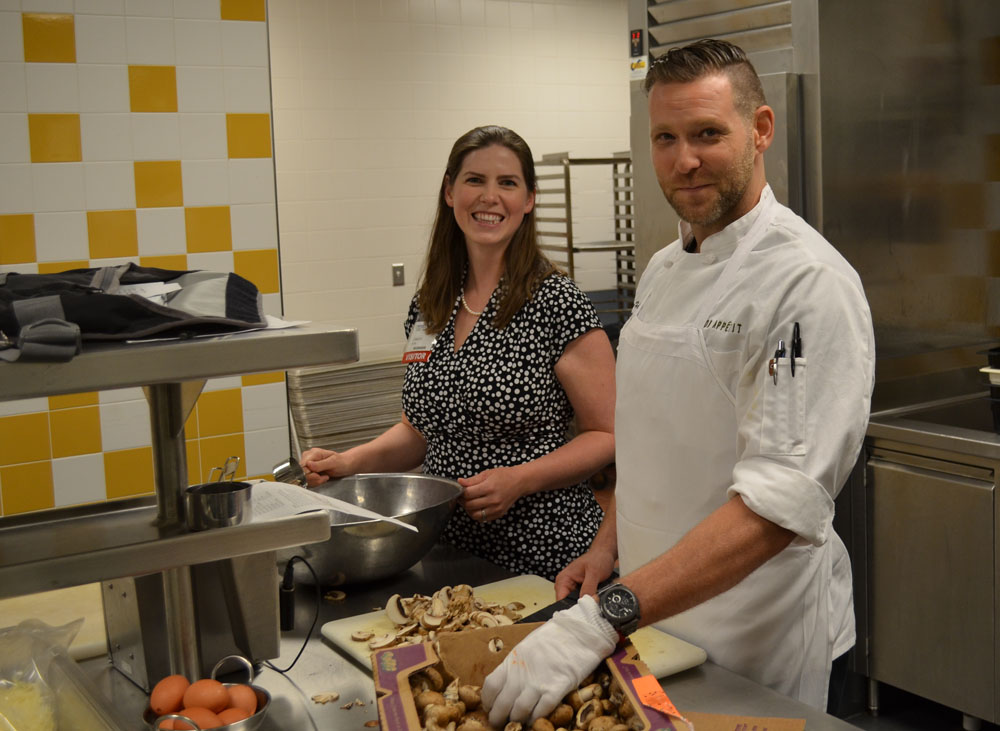Bon Appétit Is Healthy from Start to Finish — and From Coast to Coast
- by Guest
What do a star chef, a baking legend, registered dietitians, and hundreds of Bon Appétit culinarians have in common? This summer, they learned all about healthy cooking!

Culinary instructor and cookbook author Raghavan Iyer
The Bon Appétit corporate wellness team kicked off the summer by announcing an updated companywide wellness initiative that includes the commitment to make one-third of all menu items healthy choices (as defined by their combination of lean or plant-based proteins, whole grains, fruits and vegetables, and minimal fats). To spread the word and give chefs, managers, and their teams the tools to achieve the new commitment, Director of Special Culinary Programs Jim Dodge, Director of Nutrition and Wellness Terri Brownlee, and Nutrition Project Manager Sarah Gold developed an 11-stop healthy cooking training roadshow that kicked off in Boston.
The full-day training was designed to inspire chefs to emphasize wellness in their cafés and teach them how to make dishes that are not only healthy from start to finish, but also achieve the company’s dream of creating meals that are alive with flavor and nutrition. The training brought to life Bon Appétit’s newly updated Well-Being Commitments (WBCs), which are encapsulated by the seven words of journalist Michael Pollan’s “eater’s manifesto”: “Eat food. Not too much. Mostly plants.” This catchphrase guided the day’s activities in and out of the kitchen, allowing the chefs to experience the benefits of cooking with more spices and herbs and less sugar, salt, and fat, while focusing on more plant foods to improve the health of both people and planet.
Spending time with Raghavan Iyer — culinary educator, cookbook author, and the host of the award-winning documentary Asian Flavors — was a major thrill for many of the attendees. Raghavan started the training with a cooking demo highlighting the use of nutrient-rich vegetables and whole grains at breakfast with a cracked-wheat breakfast porridge and a sweet potato and vegetable hash. With the help of Bon Appétit’s registered dietitian nutritionists (RDNs), he also demonstrated common pitfalls where healthy can quickly turn indulgent.

Colorful Mandalay rainbow salad with garlic-lime fish sauce
The power of the chef-RDN team became clear as the attendees moved into the classroom, where they learned the culinary and nutritional benefits of practicing “stealth health,” or elevating the nutrition of a dish by sneaking in better-for-you ingredients while also cutting calories, salt, and fat. Raghavan and the dietitians emphasized the advantage of starting with seasonal ingredients (eat food); limiting sugar, salt, and fat; plating proper portions (not too much); and using more plant foods while employing culinary creativity to enhance the appeal of healthy options (mostly plants).
In the kitchen, attendees practiced measuring and weighing ingredients, which is especially important when providing nutrition information to meet the upcoming FDA menu labeling requirements. They put to test many of the stealth health techniques learned in the classroom, such as using black beans in brownies, adjusting the ratio of non-starchy vegetables to starchy ingredients in composed salads, baking green-bean “fries,” and adding sweet potatoes and kale to mac ‘n’ cheese. Many were able to try out new culinary techniques like spiralizing vegetables into “noodles” and perfecting a pizza crust made from roasted cauliflower.

Jennifer Pope, registered dietitian and board manager at Carleton College, and Shaun Holtgreve, executive chef at Target
At each of the trainings, it was especially fun to see the chefs put their own twist on these recipes, whether it was turning up the heat by toasting spices, adding more color with fresh herbs, or using the salt they were allotted for a recipe at different points throughout the cooking process to bring out a different flavor profile. All of this creativity came to life while also staying within the recipe parameters for ingredients that affected the nutrition content.
The training concluded with a family meal, where attendees enjoyed 25 healthy recipes abundant in color and most definitely alive with flavor and nutrition. Discussion at the lunch table underlined the chefs’ and managers’ excitement for new ideas to bring back to their cafés, the understanding of the company’s new one-third commitment, and the hunger for more trainings like this one.
Submitted by Terri Brownlee, Director of Nutrition and Wellness